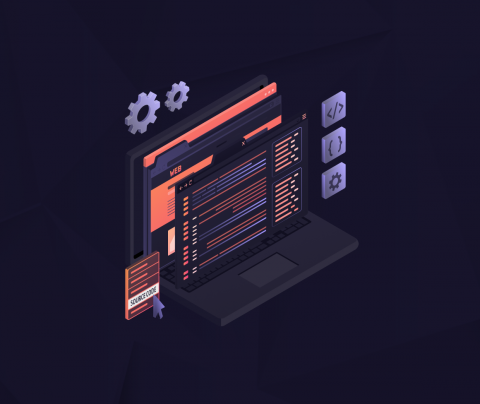My introduction to CPA affiliate marketing felt almost too easy. I’d just send traffic to an offer, and, boom, commissions. The postcard version leaves out the big caveats. In reality, the model usually tricks newcomers, presenting the façade of a single, simple action when the real currency is audience insights, fraud mitigation, traffic structure, and relentless funnel tweaks. Half the first month for almost anyone is spent studying numbers, troubleshooting an ad account, or tracing the source of an awful drop-rate.
The pitch is intoxicating: get paid for the next step in the funnel that doesn’t promise to linger; the money is immediately tied to an activity, far sped up from typical e-commerce. Yet actions don’t share the same value. One sweet signup could pay, the next could refund, and another could vanish. The click that felt easy yesterday suddenly costs twice the expected price today. I’ve watched driven, capable folks flee when realizing they’d spent three evenings for negative ROI. This isn’t Plan-B pocket change; it’s Plan-E focused, and it craves the same systems, adjustments, and patience most real startups need.
Understanding CPA vs. RevShare
The first fork in the road I encountered was CPA versus RevShare – two acronyms I’d casually thought were interchangeable but turned out to describe opposing mindsets. Both types let you get paid for referring customers, but the triggers and horizons are miles apart.
With CPA, the clock starts ticking the second the customer performs a specific, agreed-upon action: submitting an email, completing a checkout with a very low-cost item, or activating a short-lived trial. The payout is already locked in the instant the affiliate link is clicked, and I know exactly what the deposit to my account will be a week later. That guaranteed, immediate cash is a siren song for anyone who wants to meet this month’s bills yesterday.
RevShare, on the other hand, asks you to defer gratification and hand over the keys to the merchant you trust – that merchant, in exchange, offers you a slice of the lifetime value the user generates. I’m paid a percentage of every recurring charge, every cross-sell, or even an upsell that follows in the month or year to come. Energy and consistency are the keys to growth, but there’s no reward until the clock adds up. I think of RevShare as a tree you plant today and water judiciously, knowing that the apples may not appear till year two. CPA is the fruit I buy, already shiny and already paid for, to eat today.ٔ
The key isn’t the definition of RevShare; it’s which model secures the best outcome right now. When I’m evaluating fresh traffic sources or can’t verify the data, I lean into CPA – my exposure stays controlled. Yet once the flow in gambling or finance is firing consistently, RevShare unlocks the potential for outsized, compounding profit. Grasping that inflection point gives the foundation for all decisions in the funnel I build.
Effective CPA Affiliate Marketing Strategies
The toughest part isn’t getting access to ad networks; it’s scaling campaigns that deliver consistent profit without drama. I learned that lesson painfully. Dropping cheap traffic straight onto an offer page might squeeze out a tiny spike, but it crashes before breakfast. One day, an offer glows green; the next, it’s ghosted, the ROI musters a cough, and that 40%-plus margin puffs away.
I keep the lights on by clinging to these four rules that I’ve stamped into muscle memory:
- The traffic must live inside the offer’s skin. I don’t need a crowd; I need a precise pack that speaks the same dialect as the page. I used to chase a pool with the biggest number, then realized I had VIP access to a dead conversion.
- Every single piece of creativity keeps its backstage pass on this stage. One single image swap or a single two-second animation tidbit can set a dull performer two clicks from splendid metrics; I keep testing rewards to keep the progress bar moving forward. Honestly, it’s monotonous, but it pays out almost every damn time, and that makes the clicking stupid worth it.
- Skip the traffic heat-up, and you might as well pour rum on the ad budget, then light it. Low-friction pre-landers, light-weight advertorials, or even the simplest quiz that scans inside pattern – these all warm the traffic and grease the wheels before I even ask for an opt-in.
- Never overlook the villains hiding in plain sight: bot traffic. I’ve kissed too many campaigns I thought were bonuses only to watch 30% of the conversions hit the chargebacks list next pay period. Machine-made clicks crush margins the same way flame consumes paper, which is why a fraud-detection toolkit is on my desk day and night.
The real breakthrough for me came when I accepted that CPA affiliate marketing is, first and foremost,t a numbers game. My only goal is to ensure that my cost per click stays beneath the value of the action I’m pushing. The calculation itself is cold and unambiguous: if that ratio is in my favor, the rest is just compounding. But that blunt arithmetic is only the preamble; what takes place between the moment someone lands on my ad and the instant I see the check is a ballet of judgment, intuition, and applied technique. Master the choreography and the music pays; falter, and the click becomes a debit. That’s where the edge is drawn, and it’s a hard line.
Tools and Software for CPA Affiliate Marketing
I watch the same story unfold year after year: entire campaigns go dark not because affiliates can’t source creative, but because the tech they lean on was never meant to power scale. Someone fires up a desktop full of macros, consults a spreadsheet that last saw updates at last quarter’s review, then pastes numbers into a dashboard that updates only after the account execs have gone home. Those delays, missing links, and manual pivots – they choke the flow of data, obscure the patterns that matter, and give glitches a backstage pass to the financials.
So we started Hyperone the way engineers would sketch a plant’s flow diagram: pencil, breakdown every choke point, then cede the ergonomics to code. Rather than the usual clunky CRM, we wrote code that strips the repetitive and the costly. The UAD (“User-Ad-Delivery”), acronyms, were the engineers’ gift – balances traffic the millisecond the telemetry shines a red dot, killing the guesswork of spinning percentage sliders for underperforming creative. A layered fake-click filter keeps the would-be bots at the perimeter, letting your numbers breathe and letting payout ledgers stay stable.
Transparency was a non-negotiable. Late data is noise, not insight, so every dashboard, every time series, is streamed at wire speed – your trends arrive vintage of the same second. Integrations, the knotted point for every data pipeline, get an API so visual and so exhaustively documented that a developer can begin bleeding input into the mainline without keying a single password before the fifth minute of the dive. No steep uphill, the sales team’s ear-burn never goes away.
Our mission isn’t to load another gadget onto your already packed workflow; it’s to erase the relentless, low-priority technical tasks that keep you from scaling faster. Mark the clicks we know you’ll want filtered out, watch the reports update in real time, and let integrations click together without scraping the calendar months for that final tweak. When all of that just operates, your time switches from firefighting to mapping the next quarter and multiplying campaign reach – that’s where the gain in productivity actually lives.
Maximizing Earnings with CPA Affiliate Marketing
Scaling CPA campaigns isn’t just about throwing extra budget at ad sets – any seasoned manager tells you the winning approach is maxing the value of each conversion first. I’ve tried the budget-hammer method myself: more spend on the same angle, same audience, same copy, and the only thing fixed was the ROI. Lesson learned – scale is a function of performance, not dollars. Begin at the conversion and work backward.
I’ve stopped chasing cold traffic alone. The retargeting layer is critical – it reopens conversations with the 90% who landed, hesitated, and vanished, plus layering a hybrid deal, sometimes CPA up front and RevShare once the backend confirms delivery, lets me monetize daily front and back. Inside the funnel, the same attitude applies: I swap traffic sources each quarter, punch up pre-landers, and leave the credit on the floor for segments that behave badly and never convert. Every excess click skims my margin, a nd that margin gets a budget call the next day.
Each fine-tuned element feels marginal in isolation – 5% quicker load on that sleeve of pre-landers, 10% exclusion of low-intent keywords, yet the marginal compounding sticks. Those percentages snowball; when the traffic reappears a week later, propensity is already upgraded, margins have expanded, and the platform re-crowds my competition. The scale feels stealthy, continues on autopilot, and I’ve got a monstrous ROI that bankrolls the next test, scalable by design, not by brute spend.
Case Studies: Success Stories in CPA Affiliate Marketing
Let me share a couple of examples that drill into the main headache most affiliates deal with.
A solo media buyer I know plowed hours into finance offers. His traffic looked solid on the dashboard, but net profit was a big, fat zero. The culprit wasn’t the creatives – it was traffic fraud. Bots quietly drained his spending, and the truth surfaced only when an automated fraud detector was switched on. A month later, his ROI jumped because the junk traffic was cordoned off. The takeaway? It isn’t only about fresh ads; sometimes you can’t see the leak until the right tech arrives.
Another network I partner with kept running into traffic jams with advertiser onboarding. Each integration was a manual chore, and weeks of email ping-pong shot opportunities in the foot. Once they wove in an automation layer, the logjam disappeared. In that moment, they discovered their real cap wasn’t traffic inventory; it was the hours wasted on repetitive clicks and emails.
I’ve been on both sides. I’ve watched campaigns stall because of problems hidden in the code – fraud, mismatched audience pixels, buggy integrations. And I’ve cheered campaigns that took off the instant those obstacles were taken care of.
Final Thoughts
CPA affiliate marketing seems like a simple game at first – direct traffic, watch money add up. Then reality hits: sketchy clicks, compliance nightmares, delayed integrations, mismatched traffic. These stealthy grass fires zap margins, take a “sure W” campaign, and turn it into a loss in a week. Most people ignore the smoke until the flames are out of control.
Success, in contrast, belongs to the affiliate who reverses that playbook. They stop dancing to the latest shiny offer and, instead, invest the first hour of every day in plugging the leaks that take penny-per-click campaigns and keep them pennies instead of bank. That’s why ecosystems like Hyperone are more than buzz. They don’t hand a single commission to anyone, but they consolidate the tedious tech rigmarole – server hassles, latency, tracking, you name it – so the affiliate’s mind stays on the metric that matters: scaling profitably.
When the smoke clears, CPA is still the fastest route to predictable cash. Just remember it feels like a system, because it is. The affiliates who see the money are the ones who spot the cracks first, apply the right countermeasures, and leverage tools that trade flashy dashboards for cold, simple profit lines. Avoid the fires on the left, and you can spend the right side of the day hiring, optimizing, and rolling out the next, better creative.
And in a business driven by seconds and cents, the single shift that can turn a mid-road campaign into a goldmine is this: see the real problem first, fix it now, scale later. That’s leverage.









